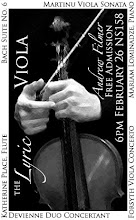A little over two years ago, I was thinking of moving on, and the whole thing with applying for a Master's was far from being a done deal. There was a possible opening - there were a couple of entrepreneurs who had considerable success in something akin to tuition classes, but more formalized, with larger organization and oversight, and facilities that rivaled most international schools. They called me in for an informal discussion about starting up a new programme in music, that moved away from our standardized notation. Something involving colour-coding, notation based on physical positions on instruments, and playing by ear. It was an innovative idea, and it was quite tempting in my position then to tell them what they wanted to hear and teach what they wanted to teach. But I thought that the right thing to do was to articulate an honest disagreement on the grounds that the students under the programme would have to learn both systems in order for them to be able to operate outside of their new classrooms. Plus, the complications of printing all music in colour, reprinting older music and where the Suzuki programme had already gone. It was a difficult thing to say, and I didn't get a job. I did however, get into a Master's programme, so it all worked out for the best.
Just because I didn't agree with that particular form of innovation didn't mean that I think our musical notation is perfect. My guess is that it's been over a hundred years since we've made any changes - not including contemporary music notation, of course. The last change from overall notation was probably the direction of the stems and tails of notes. I have always thought that the alto clef should be revised, since the only instrument which uses it regularly is the viola, and we only go one notch below the stave. On a practical level, that's either a waste of paper or a waste of ink (the latter being the constant changes of clef). I once moved the viola notation of the Prelude to Bach's Cello Suite No. 1 down two steps so that violinists could sightread on the viola. And I thought I was hot stuff in the discovery business until I learned that what I had done had already existed a few hundred years, and was called the soprano or sopranino clef.
Here we are years later and I get a message on YouTube from a fellow Indiana U. alumnus, who happens to be involved in a project to evolve the notation system. It's called: The Music Notation Project. Always fascinating the way things revisit us, challenging us to continually fine tune our ideas. Sometimes I think that this is the nature of intellectual endeavours today: not necessarily to discover, but to link, rethink, and always be open to welcoming back an old idea.
Friday, June 20, 2008
Subscribe to:
Post Comments (Atom)







No comments:
Post a Comment